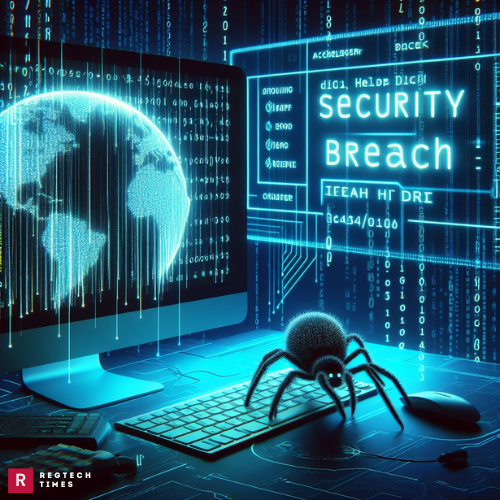In a startling admission, a top FBI agent has detailed a strong juvenile cybercrime network called Scattered Spider that has about a thousand members. This group, which has been implicated in several high-profile breaches, has made a name for itself as one of the most significant cybercrime organizations operating today. The organization’s composition, strategies, and the difficulty it poses for law enforcement were all emphasized during the most recent Sleuthcon conference.
The Nebulous Nature of Scattered Spider
During his speech at Sleuthcon, Bryan Vorndran, the associate director of the FBI’s Cyber Division, gave an extensive analysis of Scattered Spider. The organization, according to him, is “very, very large, expansive, disbursed,” with a large number of members who are not close friends. Because Scattered Spider is decentralized, it is extremely difficult for law enforcement to track down and manage.
Origins and High-Profile Breaches
The source of Scattered Spider is an internet group called “the Com.” The organization is also monitored by cybersecurity companies under UNC3944 and “0ktapus” aliases. The most thorough understanding of the scope and breadth of the group may be found in Vorndran’s thoughts. The group’s sophistication is demonstrated by its ability to remain anonymous and coordinate despite its size.
Scattered Spider has been connected to security breaches at Okta and MGM Resorts, among other large organizations. The group has established itself as a major cybersecurity threat because to its operations, which are mostly conducted by native English speakers in the United States and the United Kingdom. Scattered Spider was placed by Vorndran among state-sponsored threats by the foreign intelligence services of China and Russia.
Sophisticated Social Engineering Tactics
Part of the reason for the group’s success is their skill in social engineering. The skilled manipulator Scattered Spider frequently targets help desks and other vital access points in an effort to obtain access to privileged networks. Members show exceptional competence in traversing networks and obtaining data once they are inside. Occasionally, they have worked in tandem with well-known ransomware organizations to further enhance their influence.
The MGM and Caesars Attacks: A Turning Point
After the attacks on MGM Resorts and Caesars Entertainment, the group’s notoriety skyrocketed. These events demonstrated the group’s ruthlessness and capability, seriously disrupting hotel and casino operations in Las Vegas. Following the event, scientists observed that the composition of the Com was unstable, with new smaller groups emerging and engaging in mutual cooperation or rivalry.
The Darker Side: Physical Threats and Violence
In addition to cyberattacks, certain Com groups have used physical intimidation techniques. There have been rumors of organizations that provide “violence as a service,” which includes beatings and property destruction, in order to force victims to comply with demands for extortion. The convergence of cyber and physical dangers signals a risky change in the strategies used by cybercriminals.
Law Enforcement Challenges and Actions
Despite its best efforts, the FBI has been under fire for what is seen as a lack of success in terms of Com member arrests. The fact that some members might be living in the US makes it more difficult to capture them. FBI officials, however, claim that actions that are not public have been taken and that more substantial actions would be taken in the future. An important step toward breaking up the ring was taken in January when 19-year-old Noah Urban was apprehended in Florida.
Calls for Increased Attention to Cybercrime
Due to the serious threat posed by organizations such as Scattered Spider, there have been calls for cybercrime to be given the same priority and resources as state-sponsored cyber operations, also referred to as “advanced persistent threats” or APTs. This was stressed by Selena Larson, a senior threat intelligence analyst at Proofpoint, at Sleuthcon. She claimed that cybercrime frequently poses a bigger threat to enterprises than actors with government support. Those attending the conference agreed with her views, showing that there is increasing agreement about the need to reallocate resources and emphasis.
Scattered Spider poses a serious threat to both law enforcement and cybersecurity. The organization embodies the changing face of cybercrime with its vast, decentralized structure and skill in both digital and physical intimidation. The public and business sectors must work together to develop creative solutions to counter the threat posed by groups such as Scattered Spider as the calls for greater attention to cybercrime become stronger.


